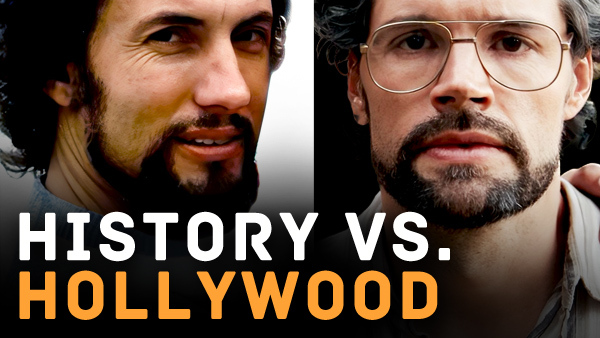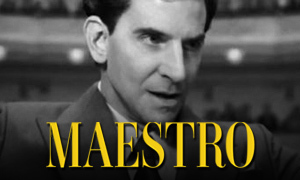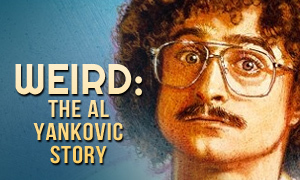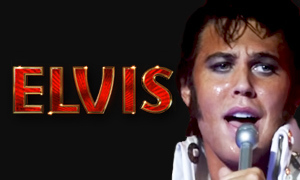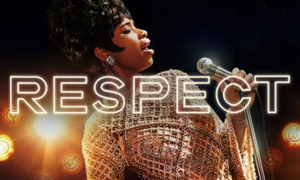Hamilton: History vs. Hollywood
Lin-Manuel Miranda
Born: January 16, 1980
Birthplace:
New York City, New York, USA
Alexander Hamilton
Born: January 11, 1755 or 1757
Birthplace: Charlestown, Nevis, British Leeward Islands
Death: July 12, 1804, Greenwich Village, New York, USA (gunshot during duel with Aaron Burr)
Phillipa Soo
Born: May 31, 1990
Birthplace:
Libertyville, Illinois, USA
Eliza Hamilton
Born: August 9, 1757
Birthplace: Albany, Province of New York, British America
Death: November 9, 1854, Washington, D.C.
Bio: Wife of Alexander Hamilton
Leslie Odom Jr.
Born: August 6, 1981
Birthplace:
Queens, New York, USA
Aaron Burr
Born: February 6, 1756
Birthplace: Newark, New Jersey, British America
Death: September 14, 1836, Staten Island, New York, USA (stroke complications)
Bio: Friend Turned Enemy of Hamilton
Daveed Diggs
Born: January 24, 1982
Birthplace:
Oakland, California, USA
Thomas Jefferson
Born: April 13, 1743
Birthplace: Shadwell, Virginia, British America
Death: July 4, 1826, Charlottesville, Virginia, USA
Bio: 3rd U.S. President
Anthony Ramos
Born: November 1, 1991
Birthplace:
Brooklyn, New York, USA
John Laurens
Born: October 28, 1754
Birthplace: Charleston, South Carolina, British America
Death: August 27, 1782, Combahee River, near Beaufort, South Carolina, USA (shot during Battle of the Combahee River)
Bio: Close Friend of Hamilton
Chris Jackson
Born: September 30, 1975
Birthplace:
Cairo, Illinois, USA
George Washington
Born: February 22, 1732
Birthplace: Popes Creek, Virginia, British America
Death: December 14, 1799, Mount Vernon, Virginia, USA
Bio: 1st U.S. President
Jonathan Groff
Born: March 26, 1985
Birthplace:
Lancaster, Pennsylvania, USA
King George III
Born: June 4, 1738
Birthplace: Norfolk House, St James's Square, London, England
Death: January 29, 1820, Windsor Castle, Windsor, Berkshire, England
Renée Elise Goldsberry
Born: January 2, 1971
Birthplace:
Santa Clara County, California, USA
Angelica Schuyler
Born: February 20, 1756
Birthplace: Albany, Province of New York, British America
Death: March 6, 1814, New York City, New York, USA
Bio: Hamilton's Sister-in-Law
Jasmine Cephas Jones
Born: July 21, 1989
Birthplace:
Brooklyn, New York, USA
Margarita "Peggy" Schuyler
Born: September 19, 1758
Birthplace: Albany, Province of New York, British America
Death: March 14, 1801, Albany, New York, USA
Bio: Hamilton's Sister-in-Law
Okieriete Onaodowan
Born: August 16, 1987
Birthplace:
West Orange, New Jersey, USA
James Madison
Born: March 16, 1751
Birthplace: Port Conway, Virginia, British America
Death: June 28, 1836, Montpelier, Virginia, USA (congestive heart failure)
Bio: 4th U.S. President
Anthony Ramos
Born: November 1, 1991
Birthplace:
Brooklyn, New York, USA
Philip Hamilton
Born: January 22, 1782
Birthplace: Albany, New York, USA
Death: November 24, 1801, New York City, New York, USA (gunshot during duel with George Eacker)
Bio: Son of Alexander Hamilton
Was Alexander Hamilton born a penniless, bastard child in the Caribbean who became an orphan?
Yes. The Hamilton true story reveals that he was born in 1755 on the Caribbean island of Nevis in the West Indian capital city of Charlestown. His mother and father were unmarried, and his father didn't want to be involved in his upbringing. His mother passed away when he was 13 years old. An avid reader and skilled writer, Alexander clerked for a trading company. After he managed to get a powerful essay published in a local paper, various leaders in the community paid for him to travel to America to pursue his education. Alexander enrolled at New Jersey's Elizabethtown Academy in 1772, and by 1773, enough people had taken notice of his academic ability that he received a scholarship to King's College (now Columbia University). He went on to publish political essays and give speeches in defense of the Boston Tea Party, becoming a champion for revolution and independence from England.
Was Alexander Hamilton a womanizer?
Yes. This was well known about Hamilton. John Adams famously (and vulgarly) once said that there weren't enough whores in Philadelphia to contain Hamilton's secretions.
How did Alexander Hamilton get to know George Washington?
While researching Hamilton's historical accuracy, we learned that after becoming the captain of an artillery company and distinguishing himself in battle, Alexander was invited to serve as an aide to General George Washington. He was given the rank of lieutenant colonel. He became Washington's right-hand man, negotiating prisoner exchanges, dealing with deserters, examining intelligence, heading diplomatic missions, and coaxing bullheaded generals. He would later serve as the first Secretary of the Treasury when Washington became the first President of the United States.
What historical works did Lin-Manuel Miranda use to create Broadway's Hamilton
While performing our fact check of the musical on Disney Plus, we discovered that Miranda based the show on author Ron Chernow's in-depth 2004 bestselling biography Alexander Hamilton.
Is Alexander Hamilton's relationship with his sister-in-law, Angelica Schuyler, portrayed accurately?
No. There's no real evidence to point to Alexander Hamilton and Angelica Schuyler having an affair, which the play hints at. Their relationship is the biggest liberty that Lin-Manuel Miranda takes when it comes to Hamilton's historical accuracy. Hamilton was a flirtatious man, and back then, it was much more common for men to be flirtatious with women. They would often write in a flirtatious manner to one another. As seen in the musical, Angelica and Hamilton did exchange letters, which were playful and flirtatious in nature.
We hear the socialite Angelica (Renée Elise Goldsberry) state that she can't be with Hamilton because he is "penniless" and she is expected to "marry rich" since she is the eldest daughter and has no brothers. Her desire for Hamilton is clear, but a fulfillment of that desire is essentially forbidden. In real life, Angelica had three brothers, so she would not have been shouldered with the responsibility of maintaining or improving her family's social status. In addition, Angelica was already married with two children when she met Hamilton. -Elle
At one point, the real Angelica wrote a letter to her sister Eliza, Hamilton's wife, asking if she could borrow him "for a little while." This was a playful exchange between two sisters and should not be taken literally, as some have done. Eliza was not horrified by her sister's comment, which was meant to be humorous. As for Hamilton biographer Ron Chernow, he believes that it's clear that Angelica was a better match for Hamilton than Eliza, stating, "It seems plausible that Hamilton would have proposed to Angelica, not to Eliza, if the older sister had been eligible." It's true that Angelica was buried alongside her brother-in-law and her sister Eliza.
To learn more about Hamilton and Angelica, check out our video The True Story of Hamilton and Angelica Schuyler's Love Affair that is featured below. To be notified about our latest videos, follow us on YouTube.
Were all of the named characters in Hamilton white in real life?
Yes. In answering the question, "How accurate is Hamilton on Disney Plus?" we discovered that the only character who was also a person of color in real life is Sally Hemings, who appears in the musical in a silent cameo. Hemings was an enslaved woman who had a sexual relationship with Thomas Jefferson.
Did Aaron Burr, Thomas Jefferson and James Madison expose Hamilton's extramarital affair with Maria Reynolds?
No. In real life, it wasn't Burr, Jefferson and Madison who exposed the fact that Alexander Hamilton had engaged in financial fraud to pay off Maria Reynolds' husband, Joseph Reynolds, to remain quiet about the affair. It was actually House Speaker Frederick Muhlenberg, future President James Monroe, and Rep. Abraham Venable of Virginia who approached Hamilton with the accusation. -Vox
Hamilton's 1791 affair with 23-year-old Maria Reynolds had lasted roughly nine months. Unlike Eliza, Maria was a stunning blonde from humble beginnings. Hamilton, then Secretary of the Treasury, had paid her husband repeatedly to stay quiet about the affair. It's true that Hamilton later published a lurid account of the affair, titled the Reynolds Pamphlet, in an effort to convince people that the payments were because of blackmail and not embezzlement. -Business Insider
Were the lives of Alexander Hamilton and Aaron Burr as intertwined as the musical suggests?
No. For example, there's no evidence that Aaron Burr was present at the duel between Hamilton's friend John Laurens and Charles Lee. However, the musical has Burr and Hamilton acting as seconds during the duel. Hamilton on Disney Plus also depicts the title character asking Burr to contribute to The Federalist Papers. Yet, in reality, there is no historical evidence that shows Burr was ever asked to contribute. As stated earlier, Burr was not one of the men who confronted Hamilton with embezzlement allegations, though the musical inserts him in that confrontation. These are all understandable deviations from the Hamilton true story, as they help to keep the focus on the main characters, in addition to making the duel at the end between Hamilton and Burr feel that much more pivotal.
Was the real Alexander Hamilton a staunch abolitionist?
Not exactly. While Hamilton's views on slavery stood in contrast to the views of his slave-owning contemporaries, including Thomas Jefferson, his position on slavery was never at the forefront of his political agenda. We do know that Hamilton was a founding member of the New York Manumission Society, which strived to make New York a state free of slavery. He also openly criticized Thomas Jefferson's views that African-Americans were biologically inferior. Yet, a review of Hamilton's public record from the 1790s until his passing in 1804 doesn't reveal much regarding the abolishment of slavery. It's fair to assume, as the musical does, that if Hamilton had lived longer, he would have done more to stand against slavery. After his passing in the musical, his widow Eliza sings that she, "speak[s] out against slavery / You could've done so much more if you only had time."
The musical is exaggerating Hamilton's anti-slavery stance so that we clearly see him as the good guy in the story. In reality, while Hamilton did possess moderately progressive views towards slavery, he had bought and sold slaves for his wife Eliza's prominent New York family, the Schuylers.
Did Alexander Hamilton really tell his son Philip to raise his gun in the air during a duel?
Yes. After New York lawyer George Eacker gave a speech in which he criticized Alexander Hamilton, saying that Hamilton would be willing to overthrow Thomas Jefferson's presidency by force, Philip confronted Eacker four months later while Eacker was attending a play at the Park Theatre in New York City. Instead of apologizing for his comment about Philip's father, Eacker called Philip and his friend Stephen Price "damned rascals." It was at that point Philip and Price challenged Eacker to a duel.
The Hamilton true story confirms that Alexander told his son to raise his gun in the air and throw away his first shot. The technical term for throwing away one's first shot in a pistol duel is "deloping." The practice is used as a way to abort the conflict, hoping that the other person won't shoot a man who does not intend to engage. On the day of the duel, Philip attempted a delope but Eacker fired, mortally wounding Philip above his right hip.
Did Hamilton singlehandedly doom Aaron Burr's 1800 presidential run by casting the deciding vote in favor of Thomas Jefferson?
No. He didn't have that kind of power. However, a Hamilton fact check reveals that he did lobby the House Federalists to support Jefferson. -PolitiFact
Did Aaron Burr kill Alexander Hamilton in a duel?
Yes. The famous duel indeed took place, but it happened in 1804, not right after the presidential election of 1800. Hamilton reportedly attempted to abort the duel by way of a delope (firing in the air), as he had told his son to do. While it is believed that Hamilton shot first and fired away from his opponent, Burr returned fire, striking Hamilton in the abdomen. It is unclear whether Burr fired because he thought Hamilton was trying to hit him, or because he recognized the delope and fired anyway. It is true that Burr regretted killing Hamilton. According to author Ron Chernow, Burr would later refer to Hamilton as "my friend Hamilton — whom I shot."
Overall, how historically accurate is Hamilton?
Albeit condensed and slightly exaggerated at times, the history showcased in Hamilton is largely accurate. Aside from Alexander Hamilton's fictional love affair with his sister-in-law Angelica, the majority of what's seen is factual. "I felt an enormous responsibility to be as historically accurate as possible, while still telling the most dramatic story possible," creator Lin-Manuel Miranda told The Atlantic in 2015. He said that when he did take dramatic license he made sure he was able to defend it to author Ron Chernow, whose biography provided the basis for the musical. Chernow himself was a consultant on Hamilton.
Regarding the accuracy of Miranda's musical, Chernow told the New York Times Style Magazine, "I think [Miranda] has plucked out the dramatic essence of the character — his vaulting ambition, his obsession with his legacy, his driven nature, his roving eye, his brilliant mind, his faulty judgment."
It's obvious that the show takes liberties by singing in hip-hop, pop, R&B, and other contemporary musical genres, in addition to using a modern-day vernacular, but that's a bit of a given if you're creating a hip-hop driven musical. There's also the obvious fact that the founding fathers were white, while the musical reinterprets them as men of color. Miranda said that he chose actors of color to represent the "old, dead white men" as a way to make the story more accessible to a modern-day audience. He described Hamilton as being "a story about America then, told by America now."
